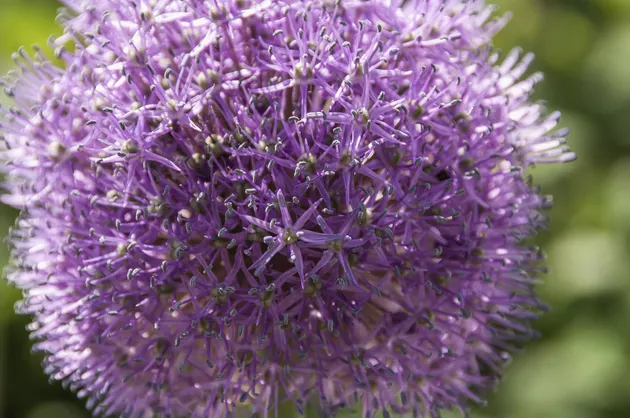
Alliums (Allium spp.) include a wide range of garden favorites, from ornamental bulbs to essential kitchen staples for most chefs. It can grow in U.S. Department of Agriculture plant hardiness zones 3 through 10, depending on the species and variety. Real flower bulbs have a life cycle, and alliums have different planting times.
Ornamental Onions
Ornamental onions (Allium spp.), also called flowering onions, provide color from early spring through summer. For varieties hardy in USDA zones 3 through 10, ornamental alliums should be planted in the fall.
Plant bulbs in well-drained soil in full sun after soil temperatures have cooled below 60 degrees Fahrenheit. If this continues, it will last about six weeks before the garden typically freezes. Planting in the fall allows the plants to establish roots before winter and prepare the bulbs for spring growth.
Alliums in warm climates can be planted until the end of December, but the earlier the better.
Edible Onions
Garden onions (Allium cepa) are usually grown as annuals and are biennial onions. It grows in USDA zones 5 through 10 and has a natural lifespan of 2 years.
In the first year, onions grow and are harvested in most gardens. If bulbous plants are left alone, they will produce seeds and die in the second year. If you grow onions from immature bulbs called sets, the planting time will depend on where you live and the type of onion you’re growing.
Onion sets grow best in cool climates, followed by warm ones. In most areas, seedlings grow best when planted in late winter or early spring. Day length also affects planting time. Short-day onions produce bulbs during short spring days. Plant short-day bulbs in the fall if climate and latitude permit.
Inspiring Garlic
Allium means garlic (Allium sativum) in Latin. These biennials grow in USDA zones 4 through 9 and are cultivated from immature bulbs called cloves. Individually wrapped cloves form the bulbous part of ripe garlic, the so-called head part.
In mild climates, garlic cloves can be planted in mid-winter, but garlic planted in the fall consistently produces larger, higher-quality crops.
Typically, plant garlic about a month before the ground freezes. The temperature must be low enough for the roots to grow, but not the tips. Roots will continue to grow as long as the temperature remains above 40 degrees Fahrenheit.
Why Timing Matters
Alliums respond differently to the seasons. Many ornamental allium plants require cold winter weather to bloom. Low temperatures trigger reactions that lead to flower formation.
Alliums grown in warm climates do not need to be chilled, but should be planted in the fall to encourage root growth. Immature onion set interrupted the onion life cycle.
It responds to spring planting and cool weather as if it were still in its first year. If planted in autumn in a warm climate, the seedlings will bloom and produce leaves before they mature.
Garlic requires 40 days of temperatures below 40 degrees Fahrenheit, which is naturally ensured by planting in the fall. Without them, the head will not split, and instead of a clove, a bulb-like bulb will remain.







